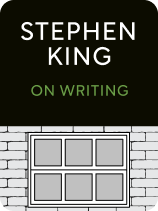

This article is an excerpt from the Shortform summary of "On Writing" by Stephen King. Shortform has the world's best summaries of books you should be reading.
Like this article? Sign up for a free trial here .
What are the elements of a story? How can you incorporate these elements into your writing?
The elements of a story are narration, description, and dialogue. These three key elements of a story should always be in your writing and you should work to strengthen them.
Read more about the question “what are the elements of a story” and how to use them in your wriitng.
What Are The Elements of a Story?
So what are the elements of a story? Stories consist of three things:
- Narration: telling what happens and moving the story along
- Description: adding sensory details to enliven the story
- Dialogue: how characters talk
Narration and Avoiding Plot
What are the elements of a story when it comes to narration and plot? King hates the idea of pre-planning a story’s plot. This feels artificial. Our lives are plotless—we don’t know in advance what’s going to happen—and that gives life a constantly surprising, entertaining flavor. Writing a story should be the same.
Instead, King believes the story reveals itself as he writes. He doesn’t force the action to move in a particular direction; the characters decide what to do, and he merely narrates what is happening as he observes it.
He analogizes writing like this to archaeology: The story already exists, buried in the dirt like a fossil. Your job is to unearth it delicately.
What does this mean, in practice? King typically starts his stories with a situation, then discovers how his characters work their way out of the situation. Interesting situations typically start as “what if?”
- Carrie: What if a bullied girl in high school learned she had telekinetic powers?
- Misery: What if a psychotic fan kidnaps a romance writer?
From there, he lets the story develop without an ironfisted demand for what should happen. He usually doesn’t know how the story will end. Instead, he watches the characters work their way through the situation. The characters may surprise him with their ingenuity or complexity; King doesn’t know what they’re going to do until they do it.
Description
Description provides sensory texture to the story, which draws the reader in viscerally. You’ll primarily describe the environment and the characters. What are the elements of a story in this case?
You don’t want too little or too much description.
- Too little description leaves the reader without a mental world to construct.
- Too much description feels onerous and buries the story in unnecessary detail. Some writers get carried away, describing the world in florid detail. In reality, your job as a writer is to tell the story.
Aim for the middle. Provide enough detail to seed the reader’s imagination, but not so much that you prevent the reader from filling in her own details. As you visualize a scene, choose the few details that immediately come to mind.
Dialogue
Dialogue is what characters say. It defines who they are and what they’re like. How does this help answer the question “what are the elements of a story?”
The best dialogue sounds truthful—a reader believes that real people would talk that way. Wooden dialogue sounds forced and grates on the ear.
Writers vary in their ability to write good dialogue. Part of it depends on how writers interact with people. Writers who write the best dialogue like listening to other people, absorbing their rhythms, accents, and slang. Recluses often don’t know how real people talk and so find it hard to make their characters talk convincingly.
Other Literary Devices
Beyond these three basic elements, the writing toolbox contains many other tools, like symbolism, themes, and back story.
King’s advice on these tools is to make use of any tool that will enhance your story. Like spices in a recipe, they add flavor and character to the writing. But don’t go too far—remember that the point of the story is to tell a story, not to show how many words you can alliterate.
So now you know the answer to the question “what are the elements of a story?”

———End of Preview———
Like what you just read? Read the rest of the world's best summary of Stephen King's "On Writing" at Shortform .
Here's what you'll find in our full On Writing summary :
- Stephen King's personal writing habits that led to superstar books like Misery and It
- How to make a story and characters feel real
- Why you should never use adverbs






